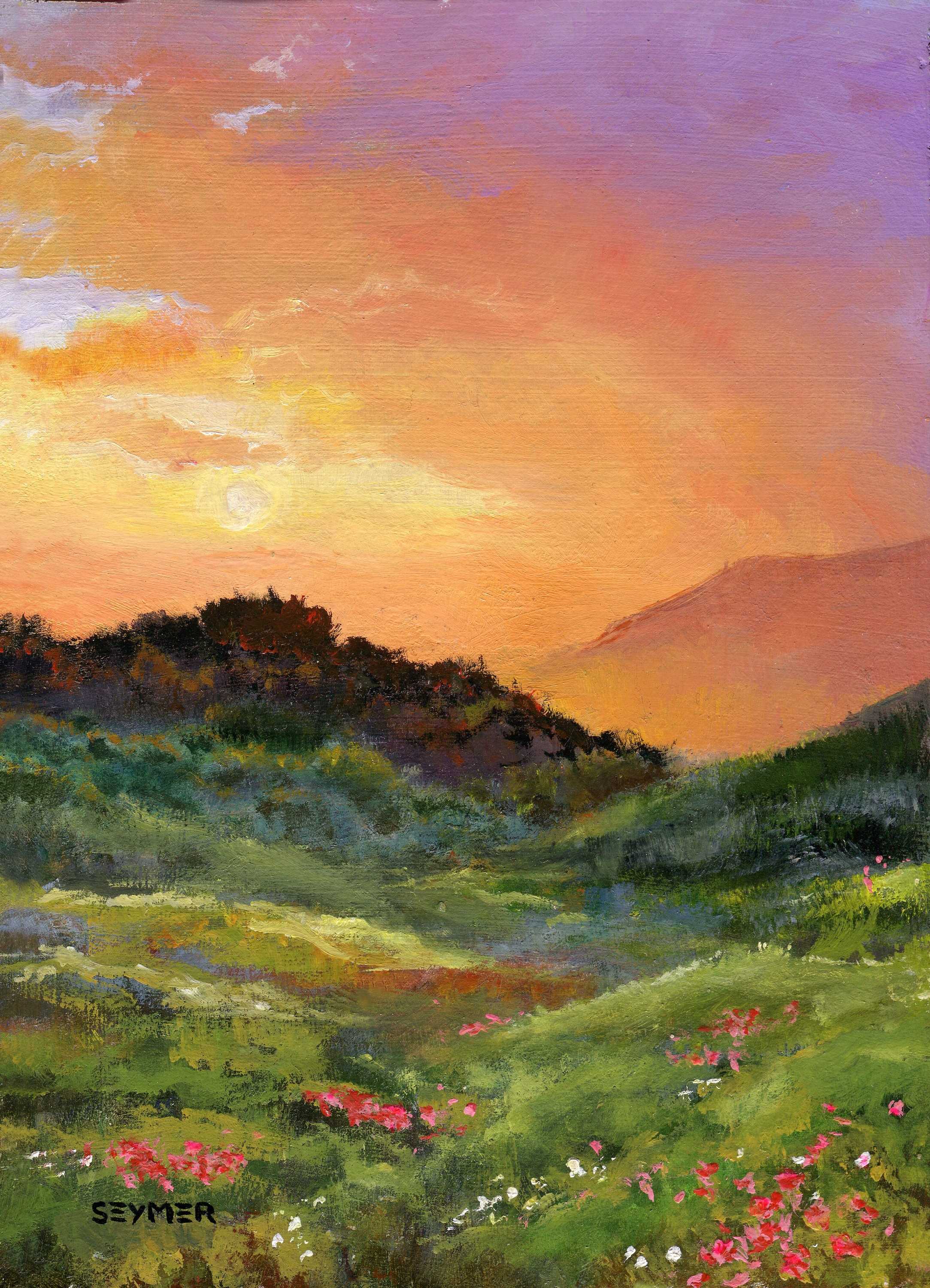Table of Contents
- Exploring the Evolution of Landscape Paintings Through the Ages
- Understanding the Techniques That Define Masterful Landscape Art
- Choosing the Right Palette: Colors That Breathe Life into Landscapes
- Incorporating Landscape Paintings into Your Home Décor for Maximum Impact
- Q&A
- The Conclusion
Exploring the Evolution of Landscape Paintings Through the Ages
The journey of landscape paintings reveals a profound connection between nature and human consciousness. In the early days, landscapes served primarily as backgrounds for religious or historical narratives. Artists like Giotto and Jan van Eyck began incorporating natural elements more thoughtfully, allowing landscapes to convey emotions and set the tone for the storytelling. This evolution marked a pivotal shift, as nature began to take center stage, leading us into the Renaissance, where artists such as Leonardo da Vinci and Raphael showcased the beauty of the natural world with unparalleled realism.
As we moved into the Baroque era, the way landscapes were portrayed transformed dramatically. Artists like Claude Lorrain and Rembrandt injected dramatic lighting and vibrant colors into their works, emphasizing the grandeur of nature. This period also saw the emergence of the “landscape as an independent subject,” with paintings that not only captured the physical beauty of the environment but also conveyed deeper philosophical meanings. The landscapes of this time often reflected the artists’ feelings regarding nature’s power, evoking awe and tranquility in the viewer.
Transitioning into the 19th century, various artistic movements further diversified landscape painting. The Romanticism movement championed emotion and individualism, while artists like J.M.W. Turner explored the sublime aspects of nature through dynamic brushwork and color igniting the imagination. This was followed by Impressionism, where artists such as Claude Monet and Edgar Degas captured fleeting moments and changing light, emphasizing perception over realism. Landscapes from this era became a blend of abstraction and observation, opening the doorway to modern interpretations.
The 20th century brought an explosion of styles and perspectives within landscape art. From the bold colors of Fauvism to the conceptual and minimalist interpretations of contemporary artists, the genre continually reinvents itself. Today, digital mediums and photography have added new dimensions to landscape representation, prompting artists to explore themes of environmentalism and sustainability. The ongoing evolution invites reflections on humanity’s relationship with nature, reminding us of our place within the splendid tapestry of the planet.


Understanding the Techniques That Define Masterful Landscape Art
Masterful landscape art is characterized by a variety of techniques that artists employ to capture the essence of the natural world. The interplay between light, color, and composition creates a harmonious scene that draws the viewer in. One of the most vital elements in landscape painting is the use of perspective. Artists often manipulate atmospheric perspective to create depth, where colors fade into lighter tones as they recede into the background. This technique not only adds realism but also evokes a sense of space and distance.
Another crucial technique is the application of color theory. Masterful landscape artists understand how to use color to convey emotion and set the mood of their artwork. Warm colors can evoke feelings of warmth and energy, while cool colors tend to create a calm and serene atmosphere. Artists often utilize palettes that reflect the time of day or the changing seasons, allowing the landscape to resonate with its environmental context. Complementary colors are particularly effective in creating contrast and highlighting specific elements within the art piece.
In addition to color and perspective, brushwork plays an essential role in defining landscape paintings. Various techniques such as impasto, where thick layers of paint are applied, can give texture and dimension, making scenes feel alive. Conversely, softer brushstrokes might be utilized to depict clouds or gentle waves, enhancing the tranquility of a landscape. Each stroke contributes to the overall narrative of the painting, and the artist’s choice of technique can significantly alter how the landscape is perceived. Below is a simple comparison of different brushwork styles:
| Brushwork Style | Description | Effect on Landscape |
|---|---|---|
| Impasto | Thick layers of paint create texture | Dynamic and engaging |
| Glazing | Thin layers of transparent paint | Soft, luminous quality |
| Sgraffito | Scratching into wet paint | Intricate details and depth |
| Wet-on-wet | Applying wet paint on wet surfaces | Blended soft edges |
Ultimately, effective landscapes compel the viewer to connect emotionally with the depicted scene. Composition plays a pivotal role in achieving this connection. The rule of thirds, leading lines, and focal points are compositional tools that guide the viewer’s eye through a painting, allowing them to explore the landscape as if they were physically present. Ensuring that natural elements such as trees, mountains, and water are thoughtfully arranged not only enhances the aesthetic appeal but also reinforces the narrative quality of the artwork. Through a masterful blend of these techniques, artists breathe life into their canvases, inviting audiences to immerse themselves in the beauty of the world around them.


Choosing the Right Palette: Colors That Breathe Life into Landscapes
When it comes to landscape paintings, the choice of color can transform a scene and evoke powerful emotions. Selecting the right palette is crucial, as it can engage viewers while bringing depth and vibrancy to the natural world. Here are several suggestions to consider when curating your color scheme:
- Earth Tones: Shades of brown, green, and ochre create a grounding effect, reminiscent of forests and fields.
- Sky Blues: Light and dark blues can depict serene skies and tranquil waters, fostering a sense of calm.
- Saturated Colors: Rich reds, oranges, and yellows can represent the warmth of sunsets or sunrises, adding drama and excitement.
- Pastel Shades: Soft pinks, lavenders, and light greens can bring a delicate beauty to florals or spring landscapes.
Consider the mood you want to convey in your artwork. A peaceful meadow may call for gentle pastels, while a stormy sea might be best captured with darker, more intense shades. A palette can be adjusted to emphasize various elements within a scene, such as:
| Element | Recommended Colors |
|---|---|
| Forests | Deep greens, browns, and bursts of soft yellow |
| Rivers | Turquoise, cobalt, and hints of silver |
| Mountains | Slate gray, muted purples, and icy whites |
| Sunsets | Fiery reds, oranges, and dusky purples |
Experimenting with color will not only enhance your landscapes but also allow your unique style to shine through. Don’t hesitate to take inspiration from nature’s palette, but also feel free to infuse your personality into your work. Mixing colors creatively can lead to unexpected and delightful results, ensuring that your landscapes resonate with viewers on a deeper level.


Incorporating Landscape Paintings into Your Home Décor for Maximum Impact
When curating your living space, landscape paintings offer a dynamic way to connect with nature, bringing outdoor beauty indoors. These artworks can transform an ordinary room into a sanctuary of serenity and inspiration. To maximize their impact, consider the following tips that elevate both the painting and the surrounding decor:
- Choose the Right Scale: Large paintings can serve as focal points in a room, while smaller pieces work well in clusters. Consider the size of your wall and the furniture layout to determine the appropriate dimensions.
- Color Coordination: Select landscape paintings that resonate with your home’s color palette. This harmony can enhance the overall ambiance, whether you prefer bold, vibrant hues or soft, muted tones.
- Frame Selection: The right frame complements your artwork and adds to the aesthetic of your space. Opt for frames that reflect the style of your decor—be it modern, rustic, or traditional.
Incorporating landscape paintings also involves strategic placement within your home. Consider the following approaches to create a cohesive and inviting atmosphere:
- Living Room: Hang a large canvas above the sofa to draw attention and spark conversation.
- Bedroom: Choose calming landscapes to promote relaxation when positioned above the nightstand or on a feature wall.
- Hallways: Use smaller landscapes as part of a gallery wall to create an engaging visual journey.
Furthermore, don’t hesitate to combine landscape paintings with other design elements to enhance their impact:
| Design Element | Complementary Effect |
|---|---|
| Lighting | Use soft, warm lighting to highlight textures in the painting. |
| Textiles | Incorporate fabric textures that echo the painting’s colors—think cushions or throws. |
| Plants | Position live plants nearby to further enhance the natural vibe. |
By embracing these techniques, you can seamlessly incorporate landscape paintings into your home décor. Allow each artwork to be more than just a visual element—turn it into a story that reflects your style and connection to nature, ultimately enriching your living experience.
Q&A
Q&A: Exploring Landscape Paintings
Q1: What defines a landscape painting?
A: A landscape painting typically captures natural scenes that emphasize the beauty of the outdoors. This genre includes elements such as mountains, forests, rivers, and fields, often focusing on the interplay of light, color, and atmosphere. Unlike other forms of art that may portray still life or human figures, landscape paintings take nature as their primary subject, inviting viewers to immerse themselves in vast vistas or tranquil environments.Q2: What are the different styles of landscape painting?
A: Landscape painting encompasses a variety of styles, ranging from realistic depictions to more abstract interpretations. Traditional realism aims to accurately portray nature, as seen in the works of artists like John Constable and Claude Monet. Impressionism, on the other hand, captures fleeting moments with bold brush strokes and vibrant colors, emphasizing the effects of light. In contrast, abstract landscape painters may use colors and forms to evoke feelings or concepts rather than presenting a direct representation of the scene.Q3: What tools and techniques do landscape painters use?
A: Landscape painters often use oil or acrylic paints for their versatility and richness in color. Common techniques include glazing, where layers of transparent color are applied to create depth, and wet-on-wet painting, which allows colors to blend seamlessly on the canvas. Artists may also utilize palette knives for texturing or employ brushes of various shapes and sizes to achieve different effects, from fine details to broad strokes.Q4: Are there famous landscape painters I should know about?
A: Absolutely! Some of the most renowned landscape painters include Vincent van Gogh, known for his expressive and emotive use of color, and J.M.W. Turner, whose atmospheric seascapes and landscapes revolutionized the genre. Also noteworthy are the American painters of the Hudson River School, such as Thomas Cole and Frederic Edwin Church, who captured the American wilderness with dramatic compositions and vivid detail.Q5: How can one appreciate landscape paintings?
A: To fully appreciate landscape paintings, take the time to engage with the artwork. Look closely at the use of color, light, and texture. Consider what emotions the painting evokes or the story it tells about the natural world. Reflect on the artist’s techniques and the influence of the landscape in their time. Visiting galleries and exhibitions or exploring landscapes in person can also deepen one’s understanding and appreciation of this captivating genre.Q6: Can anyone create landscape paintings, or does it require special skills?
A: Anyone can attempt landscape painting, regardless of skill level! While having some technical knowledge can enhance the quality of one’s work, the most important element is a passion for the subject. Beginners can start with simple compositions, learning to observe and replicate what they see. With practice, patience, and exploration, anyone can develop their unique style and create beautiful landscape art.Q7: What themes and messages can landscape paintings convey?
A: Landscape paintings can convey numerous themes—from the sublime beauty of nature to environmental concerns. They can reflect the relationship between humanity and the earth, symbolizing peace, tranquility, or even the impact of industrialization on natural settings. By capturing these themes, artists invite viewers to reflect on their connection to the environment, encouraging appreciation and respect for the natural world.By exploring these questions, you can deepen your understanding of landscape paintings and appreciate the beauty and complexity they embody. Whether you’re an aspiring artist or an avid art lover, the world of landscape painting offers endless avenues for exploration and enjoyment.
